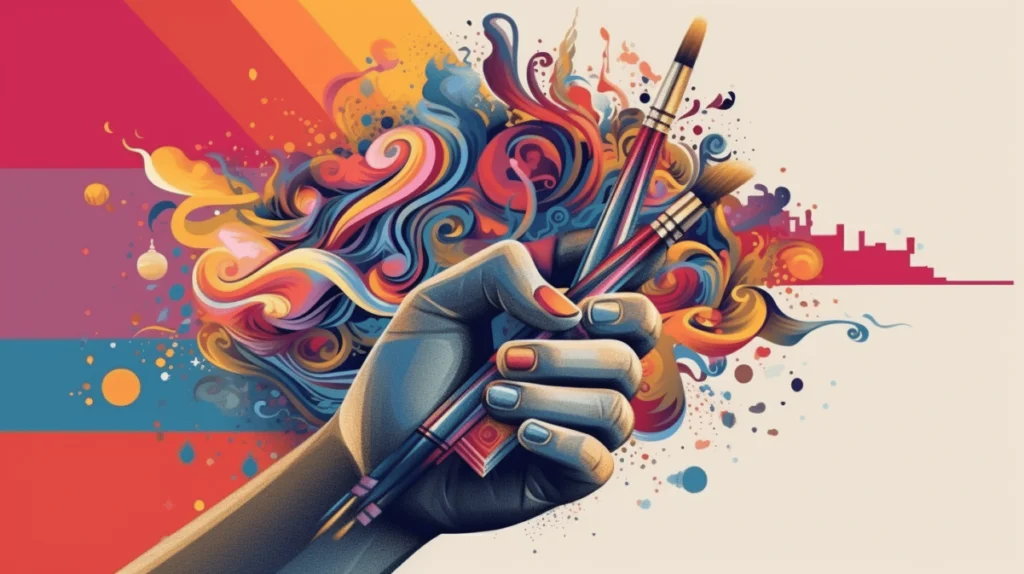In the rapidly evolving world of graphic design, the integration of AI is no longer just a futuristic vision but a present-day reality. Understanding how to train AI for graphic design is becoming essential for digital creators who wish to stay ahead in their field. This article will guide you through the process, offering insights into the potential of AI and how it can be harnessed to revolutionize your design work.

Understanding the Basics of AI in Graphic Design
Before diving into the specifics of training AI, it is crucial to grasp what AI in graphic design entails. Essentially, AI refers to computer systems that mimic human intelligence to perform tasks such as recognizing patterns, learning from data, and making decisions. In graphic design, AI can automate repetitive tasks, enhance creativity, and even generate new design concepts.
Why Train AI for Graphic Design?
The reason to train AI for graphic design is simple: efficiency and innovation. With AI, designers can save time on mundane tasks and focus on creativity and strategy. Moreover, AI can analyze large datasets to provide insights into design trends and user preferences, as detailed in our article on AI design trends.
Benefits of AI in Design
AI offers numerous benefits in design. It can speed up the design process, reduce errors, and provide personalized design options. Additionally, AI tools can assist in creating more appealing and user-friendly designs, as explored in our article about AI-powered portfolios.
Steps to Train AI for Graphic Design
Training AI for graphic design involves several steps. Heres a comprehensive guide to help you get started.
1. Define the Objective
Start by determining what you want the AI to achieve. Whether it’s automating logo creation, enhancing photo editing, or generating design layouts, having a clear objective is critical.
2. Gather Relevant Data
Data is the backbone of AI training. Gather a robust dataset that reflects the type of design work you want the AI to perform. This could include images, design layouts, and user feedback.
3. Choose the Right Tools
Selecting the appropriate tools and platforms is vital. Tools like TensorFlow, PyTorch, or design-specific AI platforms can be particularly useful. For more on AI tools, check out AI tools for graphic design.
4. Train the AI Model
Utilize machine learning algorithms to train your AI model. The training process involves feeding the AI with data and allowing it to learn and make predictions.
5. Test and Refine
After training, it’s crucial to test the AI to ensure it meets the desired objectives. Refine the model by adjusting parameters and retraining with new data if necessary.
Challenges in Training AI for Graphic Design
While training AI offers numerous benefits, it also presents challenges. These include data limitations, the complexity of design tasks, and the need for significant computational resources.
Future of AI in Graphic Design
The future of AI in graphic design is bright. As AI technology advances, its capabilities in design will become more sophisticated, enabling designers to push creative boundaries. Explore more about future innovations in our article on innovations in AI design.
Conclusion
Knowing how to train AI for graphic design can revolutionize your design practice, offering efficiency, creativity, and new opportunities. Embrace AI to enhance your design capabilities and stay ahead in this ever-evolving field.

FAQ
What is the role of AI in graphic design?
AI automates repetitive tasks, enhances creativity, and provides design insights, making the design process more efficient and innovative.
How difficult is it to train AI for graphic design?
While training AI can be complex, utilizing the right tools and techniques makes the process manageable. It’s important to have a clear objective and relevant data.
What are the best tools for AI training in design?
Popular tools include TensorFlow, PyTorch, and design-specific AI platforms that cater to various design needs.







